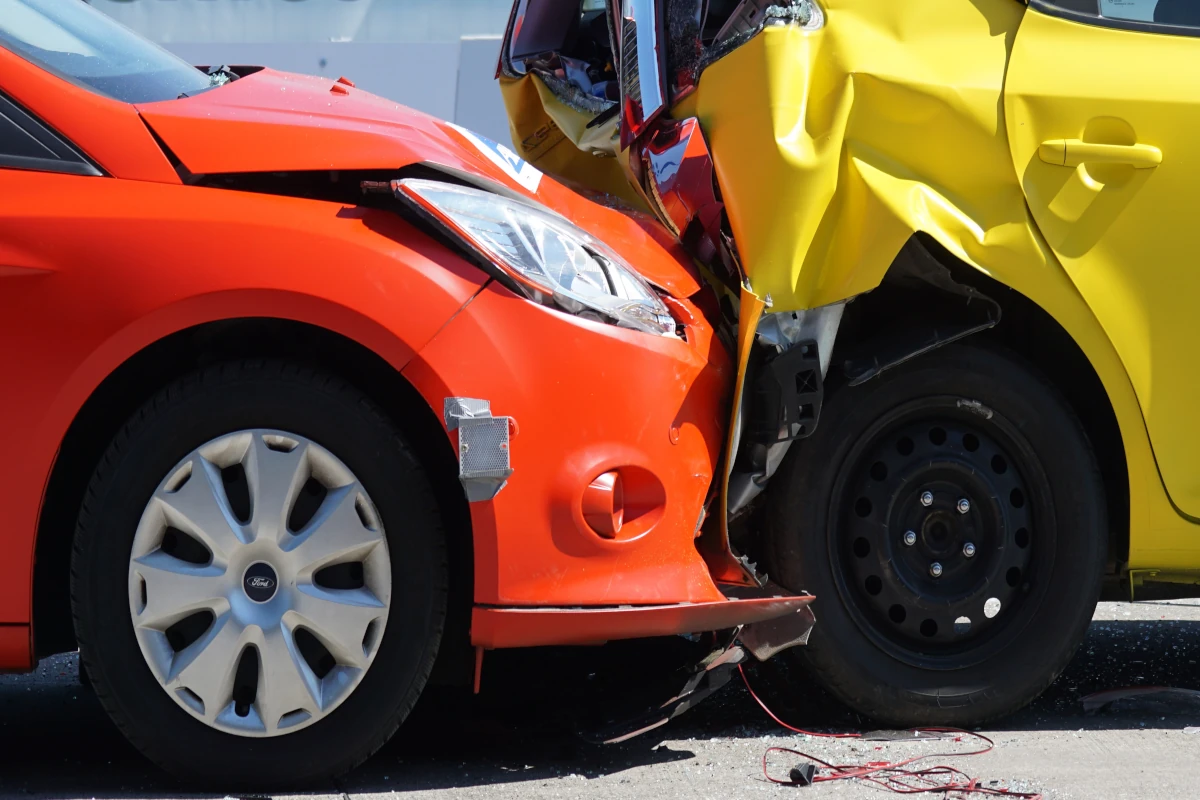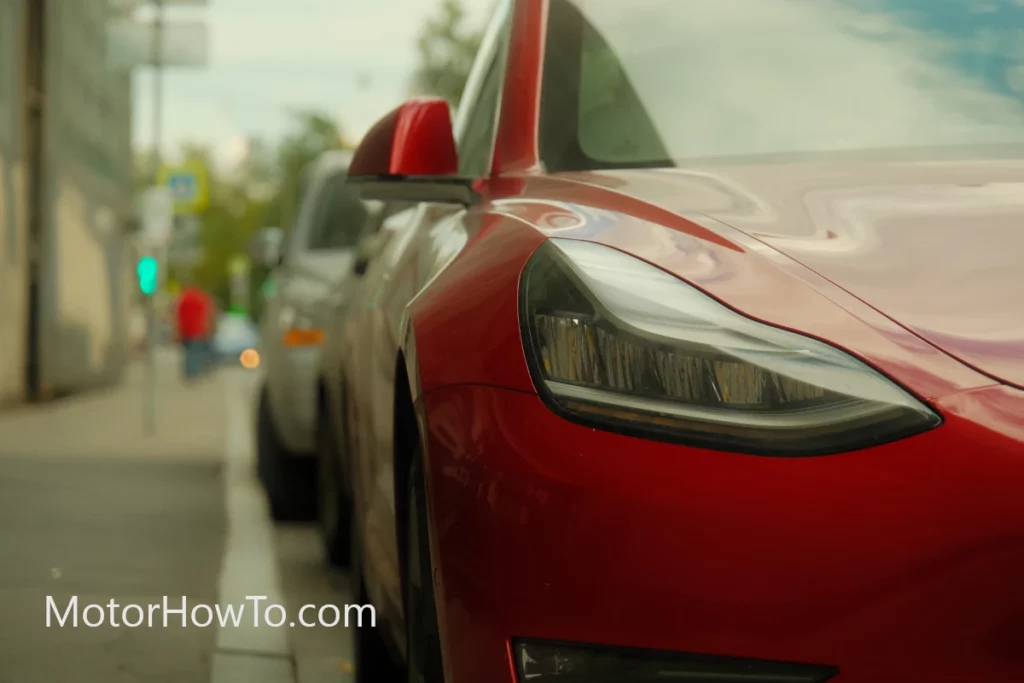Car collisions on the road can happen at any given moment, and these are accidents that can happen regardless of how careful of a driver you are.
That’s because some car collisions happen without your fault, especially when you are talking about rear-end collisions, which are actually the most common types of collisions.
In that regard, there are safety features that will help minimize injuries in any kind of collision.
So, does that mean that airbags also deploy during rear-end collisions?
Hers’s what can happen to airbags when there is a rear-end collision
Airbags aren’t designed to deploy during rear-end collisions because most, if not all, of the sensors that allow the airbags to deploy, are located at the front of the car. However, airbags can still deploy in a rear-end collision if the collision causes the car to decelerate quickly enough to deploy the airbags.

The thing that you need to know about airbags is that, as useful as they may be, there are some instances where they don’t deploy when you need them.
One such instance is when you are rear-ended, and that can be an instance when you would require an airbag because of how a rear-end collision can push you forward. The good thing is that airbags can still work if you are rear-ended, but it’s more of a case-to-case basis.
Related:
- Will My Airbag Deploy If The Light Is On? (Read First)
- Why Are Airbags So Expensive? (Guide)
- Airbag Deployment Lower The Value Of Your Car? (Explained)
Why are rear-end collisions so common?
In the fast-paced world we live in today, it isn’t uncommon for collisions to happen every now and then, especially when you are talking about the fact that accidents can always happen at any given moment.
And this is true no matter how safe and cautious of a driver you are, as there are some cases where collisions will happen due to the negligence of the other party involved.
That said, when you are talking about collisions, one of the most common types of collisions is the rear-end collision. And you might end up surprised knowing that rear-end collisions are much more common than frontal collisions. But why are rear-end collisions so common?
There are plenty of reasons why rear-end collisions are so common. And these are some of the biggest reasons why rear-end collisions are very common.
Distracted driving
Distracted driving is by far the number one cause why rear-end collisions happen.
In a study, it was shown that 87% of all rear-end collisions are caused by drivers who were distracted.
And there are many reasons why a driver was distracted.
A driver can be distracted because he was focused more on looking at their cellphone or on changing the music in the car. There are also instances when distracted driving can happen because the driver was talking to someone and was not able to focus on what was happening on the road.
Whatever the case may be, the fact of the matter is that drivers that end up getting distracted lose track of what is happening on the road. This will lead them to a slower reaction time that will lead to rear-end collisions. There are even cases where the driver won’t even be able to react at all, and that causes a more serious collision.
This is why it is important to make sure that you keep your focus on the road, as you wouldn’t want to find yourself too distracted to the point that you end up colliding with the car in front of you while driving.
Aggressive driving
Aggressive driving can also be a good reason why rear-end collisions happen.
This happens when the driver behind you is too aggressive and tends to be heavy-footed whenever he is stepping on the pedal.
In some cases, some drivers accelerate their cars aggressively to the point that they end up driving faster than the car in front, and that can lead to a collision.
Bad weather conditions
Bad weather conditions can also lead to rear-end collisions, especially if the driver’s car was not meant to drive in a particular type of condition, such as snowy roads, or if the driver is not used to driving under wet conditions.
Any kind of accident can easily happen when the weather conditions are bad.
Drunk driving
Of course, drunk driving can cause rear-end collisions from time to time because drunk drivers tend to lose focus faster than sober drivers.
When you are drunk, you are not at your best when it comes to making sure that your focus is on the road.
Of course, drunk drivers tend to have slower reaction times compared to sober drivers.
Driver fatigue
There is a reason why drivers are always asked to get a good sleep because driver fatigue is pretty common, especially for those who are in the middle of a long road trip.
When a driver is tired or sleepy, it will be easier for them to keep their focus on the road.
As such, this can lead to rear-end collisions, especially if the driver was too sleepy to tell that there was another vehicle in front.
Can a rear-end collision cause airbags to deploy?
While rear-end collisions are quite common and are actually a lot more common than frontal collisions, there shouldn’t be a lot of reasons to worry because cars are made to have safety features that will minimize the chances of a driver suffering from serious injuries in any accident.
One such safety feature is the airbag, which is supposed to cushion the passengers, as the force of impact pushes them forward.
We all know how important and useful airbags are, as they are capable of keeping you safe and minimizing serious injuries, especially when the seatbelts are working well in conjunction with the airbags.
But what happens if you are rear-ended? Does a rear-end collision allow the airbags to deploy?
Unfortunately, in most cars, the airbag is only made to deploy during frontal collisions. That is because most airbag systems work by making use of sensors that will allow the system to detect whether or not the frontal collision was strong enough to deploy the airbag. And these sensors are located somewhere in front of the car, just close to the bumpers, which are the ones that will absorb the brunt of the collision.
It might sound odd that rear-end collisions don’t cause airbags to deploy because passengers can and will jerk forward when another vehicle rear-ends them.
The force of the impact will be more than enough to force the passengers to suddenly jerk forward, especially if the collision was strong enough. An airbag would have been useful in such a situation.
However, the good news here is that an airbag isn’t always needed in a rear-end collision because passengers don’t jerk forward too much to the point that an airbag is needed to decrease the chances of injuries.
In most cases, the car’s seatbelt pre-tensioners are already more than enough to keep the passengers from moving forward too much, especially when the vehicle was rear-ended.
So, as long as you are wearing your seatbelts, you shouldn’t be too worried about a rear-end collision injuring you because the pre-tensioners in your seatbelts should be more than enough to stop you in place and prevent you from jerking forward too much.
At what speed do airbags deploy in rear-end collision?
Another thing you need to know about airbags is that the sensors that allow the airbags to deploy will work depending on how strong the force of impact is relative to the speed at which the vehicle was moving.
When you hit a solid barrier, it is already enough for you to be running at 15 mph for the collision to force the airbag to deploy. The reason here is that hitting a solid barrier does not cancel out your speed. Meanwhile, if you are in a head-on frontal collision, the airbags will deploy when the vehicles hit each other at around 25 mph.
So, as you can see, you should be moving or accelerating at a fast enough speed to force the airbags to deploy. That is why airbags don’t always deploy, as the sensors will only signal the airbag system to work whenever they detect that the force or impact was already strong enough to work.
But while airbags do not normally deploy during rear-end collisions, what you should know is that it can still be possible for them to deploy if the car behind you was running at a speed that was so great that the impact of the collision was strong enough to force the vehicle to decelerate.
Remember that the sensors that allow the airbags to deploy are located at the front of the vehicle, and that means that they will not normally deploy whenever you are rear-ended. But the thing is that some airbag systems will still work, especially if the system was able to detect that your car decelerated at a fast enough speed due to the impact.
So, while we do not have the exact numbers, what we do know is that there are still some airbags that will deploy if a car was rear-ended if and only if the car decelerated at a speed that was enough to deploy the airbags. That is why, even if the sensors are located at the front of the car, a rear-end collision may still cause the airbags to deploy.
Sources
Rear-End Collisions Are the Most Frequent Type of Collision
Do Air Bags Deploy When My Car is Rear Ended?
How Is A Rear-End Collision Different From Other Types Of Auto Accidents?



